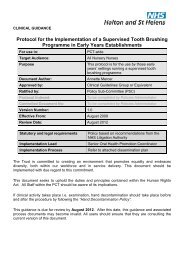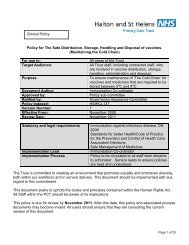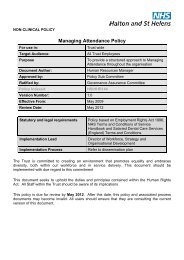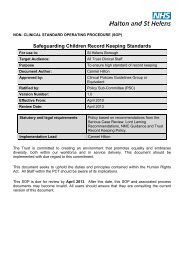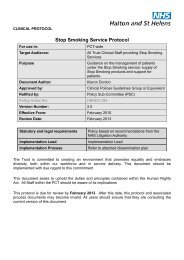Collaborative Intravenous Nursing Service (CINS) Guidelines
Collaborative Intravenous Nursing Service (CINS) Guidelines
Collaborative Intravenous Nursing Service (CINS) Guidelines
- No tags were found...
You also want an ePaper? Increase the reach of your titles
YUMPU automatically turns print PDFs into web optimized ePapers that Google loves.
Put on sterile glovesPlace sterile towel as near as possible to the catheterClose catheter clamp. Use gauze soaked in chlorhexidine to lift the end of the cathetercarefully and clean, including the pump connection, allow to dry.Hold the catheter with sterile gauze; disconnect Infusor from the access device. Apply leurlock stopper to the end of the Infusor tubing and seal it in a plastic bag clearly labelledcytotoxic waste.Using a piece of sterile gauze soaked in alcohol Chlorhexidine solution, scrub the top thenthe sides of the needle free system connection and allow to dry.Alternatively, scrub the hub of the needle free system with Chlorhexidine impregnatedwipe, rubbing from the top of the needle free connector to the sides. Do this three timesusing different parts of the wipe, over a period of 30 seconds. Allow to dry.• Flush with push pause action, clamping as the last ml of 10ml of Sodium chloride 0.9% isinstilled into the catheter. Repeat this action with 5 mls of 10units per ml Heparinisedsaline (if open ended catheter)• Ensure that the catheter is secure and comfortable.• Remove dressing towel and discard. Remove gloves. Wash hands• Clear away equipment used. Dispose of contaminated waste as per organisational policy.• Document care in patient’s records.55The CINs group hereby assert their moral rights tothe works herein in accordance with the Data Protection Act 1988.Policy review date 01/10/10




